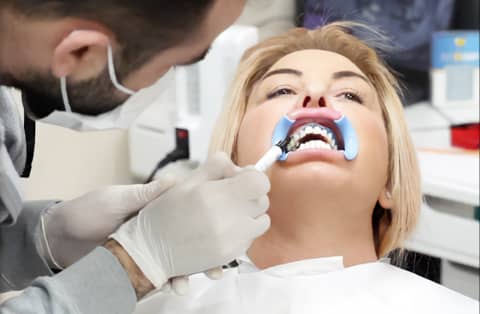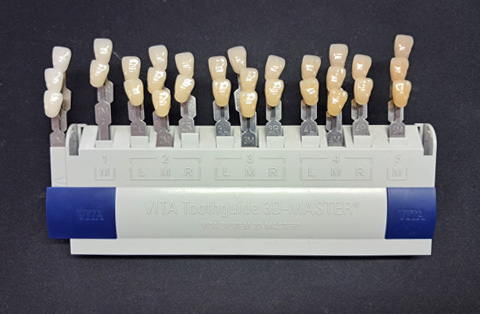Dental implants come in various types, each designed to address specific dental needs and conditions. Understanding the differences between these implant types is crucial in making an informed decision about your oral health.
This article will explore the different types of dental implants, their unique benefits, and how they can enhance your dental function and appearance.
Whether you're curious about endosteal, subperiosteal, or zygomatic implants, this guide will provide you with the essential information to choose the best option for your needs. Dive in to discover the perfect dental implant solution for your smile.
What Are Dental Implants?
Dental implants are artificial tooth roots made of titanium that provide a permanent base for fixed or removable replacement teeth. They are surgically placed into the jawbone, where they fuse with the bone through a process called osseointegration.
This integration offers a stable and strong foundation for dental prosthetics like crowns, bridges, or dentures. Dental implants mimic the look, feel, and function of natural teeth, improving oral health, enhancing chewing efficiency, and preventing bone loss.
Dental Implant Procedure
The dental implant procedure involves several steps.
First, a comprehensive evaluation, including X-rays and dental impressions, is conducted to plan the treatment.
Next, the implant placement surgery is performed, where a titanium post is inserted into the jawbone.
After the surgery, a dental implant healing period of several months is needed for osseointegration, where the implant fuses with the bone. Once healed, an abutment is attached to the implant, serving as a connector for the replacement tooth.
Finally, a custom-made crown is placed on the abutment, completing the restoration and providing a natural-looking, functional tooth.
Who Is an Ideal Candidate for Dental Implants?
Dental implants offer a durable and natural-looking solution for missing teeth, but certain conditions and factors can affect their success. Here's a quick guide to help you find out if you're an ideal candidate for dental implants:
Have one or more missing teeth
Have healthy gums
Have sufficient jawbone density
Are in good overall health
Do not smoke or are willing to quit smoking
Are committed to maintaining good oral hygiene
Have realistic expectations about the outcomes
Do not have uncontrolled chronic conditions (e.g., diabetes)
What are the 3 Main Types of Dental Implants?
The three main types of dental implants are endosteal, subperiosteal, and zygomatic implants. Each type has unique characteristics and applications. This guide will explore these implants, detailing their benefits and ideal uses.
Endosteal implants
Endosteal implants are the most common type of dental implant. They are typically made of titanium and shaped like small screws. These implants are placed directly into the jawbone through a surgical procedure. Once the implant integrates with the bone, an abutment is attached, followed by a custom-made crown.
Endosteal implants are ideal for patients with sufficient bone density and healthy gums. They provide a stable and long-lasting foundation for replacement teeth, mimicking the look and function of natural teeth.
Subperiosteal implants
Subperiosteal implants are used when there is not enough healthy jawbone to support endosteal implants. Instead of being placed into the jawbone, subperiosteal implants sit on top of the bone but beneath the gum tissue. A metal frame with posts extends through the gums to hold the replacement teeth.
This type of implant is less common and is typically recommended for patients who cannot undergo bone augmentation procedures. Subperiosteal implants offer a solution for those with limited bone structure, providing stability for dentures.
Zygoma Implants
Zygomatic implants are the least common and most complex type of dental implant. They are used when there is significant bone loss in the upper jaw, making traditional implants impossible without extensive grafting. These implants are anchored in the zygomatic bone, or cheekbone, which is denser and provides a strong foundation.
The procedure for placing zygomatic implants is more intricate and requires specialized training. Zygomatic implants are a viable option for patients with severe bone loss, offering an alternative to traditional bone grafting and allowing for the restoration of function and aesthetics.
Single vs. Multiple Implants
Dental implants can replace one tooth or many teeth. The choice between single and multiple implants often hinges on the evaluation of the patient's oral health by the dentist. Single implants are ideal for replacing individual teeth, providing a targeted solution.
However, multiple implants may be necessary when one or more teeth are missing in different regions, offering a comprehensive approach to restore function and aesthetics.
Single-tooth implant
A single-tooth implant is ideal for replacing one missing tooth. It involves placing a titanium implant into the jawbone, which acts as a new root. After the implant integrates with the bone, an abutment and a custom-made crown are attached. This solution looks and functions like a natural tooth, preserving the surrounding teeth and preventing bone loss. Single-tooth implants are a durable and aesthetic option for those missing a single tooth, providing a seamless and permanent replacement.
Multiple-tooth implant
Multiple-tooth implants are used when two or more teeth are missing in the same area. Instead of placing an implant for each missing tooth, a few strategically placed implants can support a dental bridge. This approach is less invasive and more cost-effective than individual implants for each missing tooth.
Multiple-tooth implants restore function and aesthetics while preserving jawbone health and preventing the shifting of remaining teeth. They offer a stable and long-lasting solution for patients with several missing teeth.
Full-mouth implant
Full-mouth implants, or implant-supported dentures, are designed for patients who have lost all or most of their teeth. This solution involves placing several implants in the jawbone to support a full arch of replacement teeth. The implants provide a stable foundation, ensuring the dentures remain secure and comfortable.
Full-mouth implants restore chewing efficiency, speech, and aesthetics, significantly improving the quality of life. This option is more permanent and comfortable than traditional dentures, offering a comprehensive solution for extensive tooth loss.
Understanding the differences between single-tooth, multiple-tooth, and full-mouth implants helps you and your dentist choose the best treatment for your dental needs. Each type of implant offers unique benefits, ensuring a suitable option for various situations.
How to Choose from Different Types of Implants?
Selecting the right type of dental implant involves considering your specific dental needs and overall health. Various implant options cater to different situations, from single missing teeth to complete tooth replacement. This guide will explain mini dental implants (MDIs), immediate load dental implants, and All-on-4, All-on-6, and All-on-8 implants, helping you make an informed decision.
Mini dental implants (MDIs)
Mini dental implants are smaller in diameter than traditional implants, making them a less invasive option. They are often used to stabilize lower jaw dentures or replace small teeth. MDIs are a good choice for patients with insufficient bone density who cannot undergo bone grafting. They offer a quicker healing time and are less expensive than standard implants. MDIs provide a stable and functional solution for specific dental needs, especially in cases where bone structure is limited.
Immediate load dental implants
Immediate load dental implants, also known as same-day implants, allow for the placement of a temporary crown on the same day as the implant surgery. This type of implant is suitable for patients with adequate bone density and stability to support the implant immediately. Immediate load implants provide the benefit of a quicker restoration process, reducing the waiting period between implant placement and final tooth restoration. They are ideal for those who want to restore their smile quickly and efficiently.
All-on-4
All-on-4 implants are designed to replace an entire arch of teeth using only four implants. This approach involves placing two vertical implants at the front and two angled implants at the back of the jaw. All-on-4 implants provide a stable and secure foundation for a full arch of replacement teeth, eliminating the need for bone grafting in most cases. This solution is cost-effective and efficient, offering a quicker recovery time and a complete set of functional and aesthetic teeth.
All-on-6
All-on-6 implants follow a similar concept to All-on-4 but use six implants to support the full arch of teeth. This approach provides additional stability and support, making it suitable for patients with slightly more bone density and volume. All-on-6 implants offer enhanced durability and can better distribute the biting forces across the implants. This option is ideal for those seeking a more secure and long-lasting solution for extensive tooth replacement.
All-on-8
All-on-8 implants involve placing eight implants to support a full arch of teeth. This method offers the highest level of stability and support, making it suitable for patients with sufficient bone density and volume. All-on-8 implants provide excellent distribution of biting forces and the most natural feel and function. This option is ideal for those who want the most secure and permanent solution for full-mouth restoration, ensuring optimal durability and performance.
How Do Dental Implants Compare to Other Tooth Replacement Options?
Choosing the right tooth replacement option is crucial for maintaining your oral health and restoring your smile. Dental implants are a popular choice, but how do they compare to other options like dentures and dental bridges?
Weighing the Benefits of Dental Implants over Dentures
Dental implants offer several advantages over traditional dentures. Implants provide a permanent and stable solution, while dentures are removable and may require adhesives to stay in place. Implants help maintain jawbone density by mimicking natural tooth roots, preventing bone loss over time.
Dentures, on the other hand, do not provide this benefit and can sometimes lead to bone resorption. Implants also offer improved chewing efficiency and comfort, with no risk of slipping or shifting. In terms of aesthetics, implants look and feel more like natural teeth, enhancing confidence and quality of life.
Considering Traditional Implants vs. Immediate Load Implants
Traditional dental implants require a healing period of several months before the final restoration can be placed. This process ensures that the implant fully integrates with the jawbone, providing a strong and stable foundation.
Immediate load implants, also known as same-day implants, allow for a temporary crown to be placed on the same day as the implant surgery. This option offers the advantage of a quicker restoration process, which is appealing for those who want immediate results.
However, not all patients are suitable candidates for immediate load implants, as adequate bone density and stability are required for success. Traditional implants remain the gold standard for those needing a more predictable and long-lasting solution.
Examining Dental Implants Compared to Dental Bridges
Dental implants and dental bridges are both effective solutions for replacing missing teeth, but they have distinct differences. A dental implant replaces the missing tooth's root and is topped with a crown, functioning independently of neighboring teeth. This independence helps preserve the health of adjacent teeth and prevents bone loss in the jaw.
In contrast, a dental bridge relies on the support of surrounding teeth, which must be filed down to anchor the bridge. This can weaken the adjacent teeth and may lead to further dental issues over time. While dental bridges can be a quicker and less invasive option, implants offer a more durable and long-term solution, maintaining overall oral health and stability.
Understanding the differences between dental implants, dentures, and dental bridges can help you make an informed decision about the best tooth replacement option for your needs. Dental implants provide numerous benefits, including stability, bone preservation, and a natural appearance, making them a preferred choice for many patients.
Cost of Dental Implants Types
The cost of dental implants can vary significantly based on the type of implant, the complexity of the procedure, and the location of the dental clinic. Understanding these factors can help you plan financially and choose the best option for your dental needs. This guide will provide an overview of the costs associated with different types of dental implants and a comparison of average price ranges in various countries.
Single-tooth Implants
Single-tooth implants involve the placement of one implant and a crown. They are generally the most affordable type of implant procedure since they address only one missing tooth.
Multiple-tooth Implants
Multiple-tooth implants use fewer implants to support multiple teeth, often through bridges or partial dentures. While more cost-effective than individual implants for each missing tooth, the total cost is higher than a single-tooth implant.
Full-mouth Implants
Full-mouth implants, including All-on-4, All-on-6, and All-on-8, replace all teeth in the upper or lower jaw. These procedures are the most expensive due to the number of implants required and the complexity of the surgery.
Mini Dental Implants (MDIs)
Mini dental implants are less expensive than traditional implants due to their smaller size and less invasive placement procedure. They are suitable for stabilizing dentures or replacing small teeth.
Immediate Load Dental Implants
Immediate load dental implants, or same-day implants, can be more expensive due to the need for precise planning and immediate placement. However, they save time by eliminating the waiting period between implant placement and restoration.
Comparison Chart of Costs
Country | Single-tooth Implant (€) | Multiple-tooth Implant (€) | Full-mouth Implant (€) | Mini Dental Implant (€) | Immediate Load Implant (€) |
Turkey | 500 - 1,000 | 1,200 - 3,000 | 4,000 - 8,000 | 300 - 700 | 700 - 1,500 |
UK | 2,000 - 3,500 | 4,000 - 10,000 | 15,000 - 30,000 | 1,000 - 1,500 | 3,000 - 5,000 |
France | 1,800 - 3,000 | 3,500 - 8,000 | 12,000 - 25,000 | 900 - 1,400 | 2,500 - 4,500 |
Germany | 2,000 - 3,500 | 4,000 - 10,000 | 15,000 - 30,000 | 1,000 - 1,500 | 3,000 - 5,000 |
USA | 3,000 - 4,500 | 6,000 - 15,000 | 20,000 - 45,000 | 1,500 - 2,500 | 4,000 - 6,000 |
Italy | 1,500 - 2,500 | 3,000 - 7,500 | 10,000 - 20,000 | 800 - 1,200 | 2,000 - 4,000 |
Spain | 1,200 - 2,000 | 2,500 - 6,500 | 8,000 - 18,000 | 700 - 1,100 | 1,800 - 3,500 |
This chart provides an average price range for different types of dental implants in various countries. Costs can vary based on the specific clinic, dentist's experience, and additional procedures required. It is essential to consult with your dental provider for a detailed quote and treatment plan tailored to your needs.
Other Procedures You May Have With Implants
Dental implants often require additional procedures to ensure a successful and stable outcome. These procedures help prepare the jawbone for implant placement, especially in cases where there is enough bone structure.
Bone augmentation
Bone augmentation is a procedure that restores or increases bone density in the jaw. When the jawbone is too thin or soft to support an implant, bone grafting is necessary. This involves adding bone material, either from another part of the patient’s body or using synthetic bone substitutes, to the implant site.
Over time, the graft integrates with the existing bone, creating a solid foundation for the implant. Bone augmentation is crucial for patients with bone loss due to periodontal disease, tooth extraction, or trauma, ensuring the stability and longevity of the dental implant.
Sinus lift
A sinus lift, or sinus augmentation, is a procedure that adds bone to the upper jaw in the area of the molars and premolars. When there is not enough bone height in the upper jaw or the sinuses are too close to the jaw for implants to be placed, a sinus lift is necessary.
The procedure involves lifting the sinus membrane and placing a bone graft underneath. This creates sufficient bone height to support dental implants. A sinus lift is especially beneficial for patients who have lost teeth in the upper jaw and need implants to restore their dental function and aesthetics.
Ridge expansion
Ridge expansion, or ridge splitting, is performed when the jawbone is not wide enough to support dental implants. This procedure involves splitting the bone along the ridge of the jaw and inserting a bone graft to widen it. Over time, the bone graft integrates with the existing bone, creating a broader and more stable foundation for implants. Ridge expansion is often necessary for patients with narrow jawbones due to long-term tooth loss or natural bone resorption. This procedure ensures that the jaw can accommodate the implants securely, preventing complications and ensuring a successful outcome.






